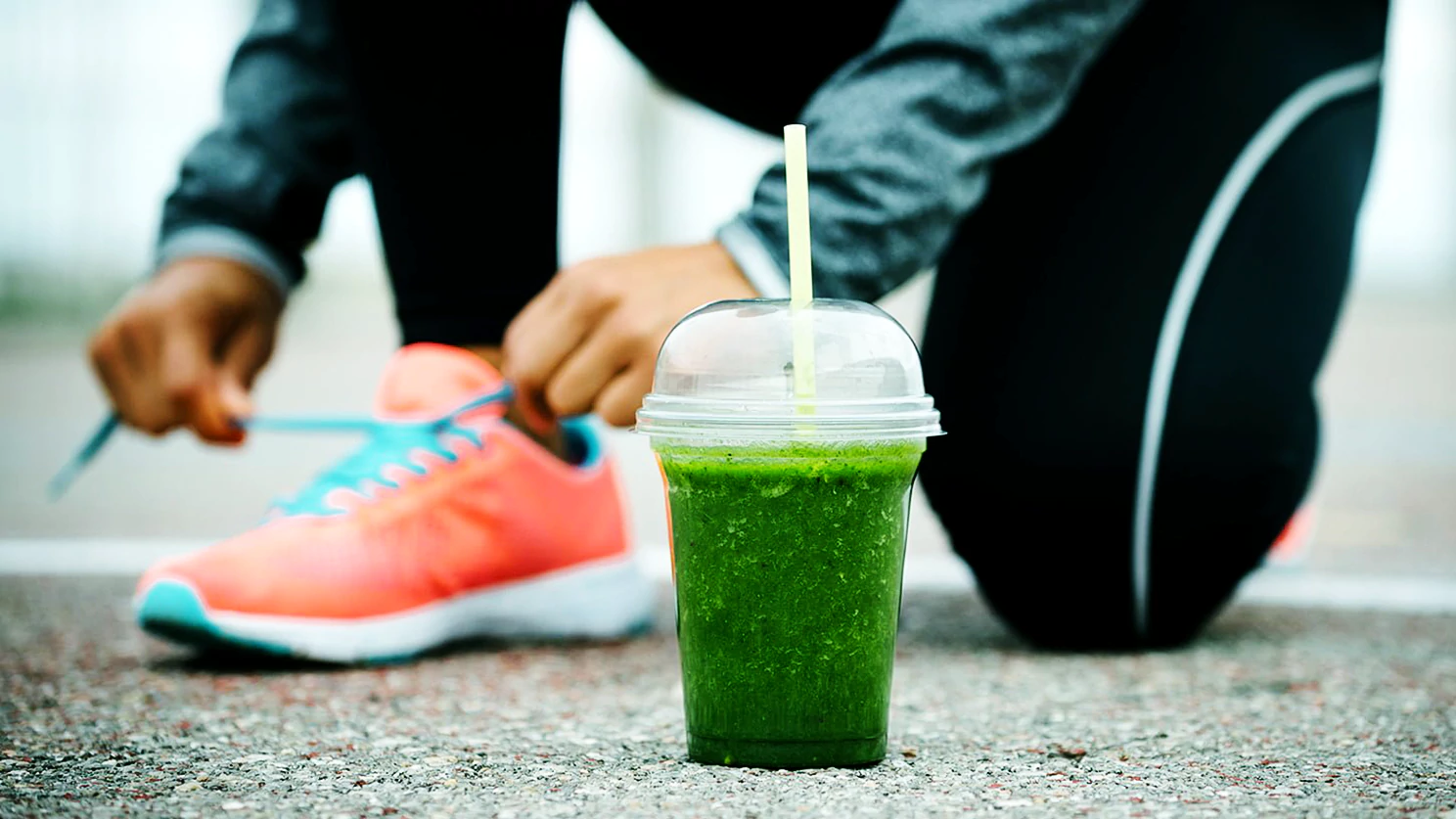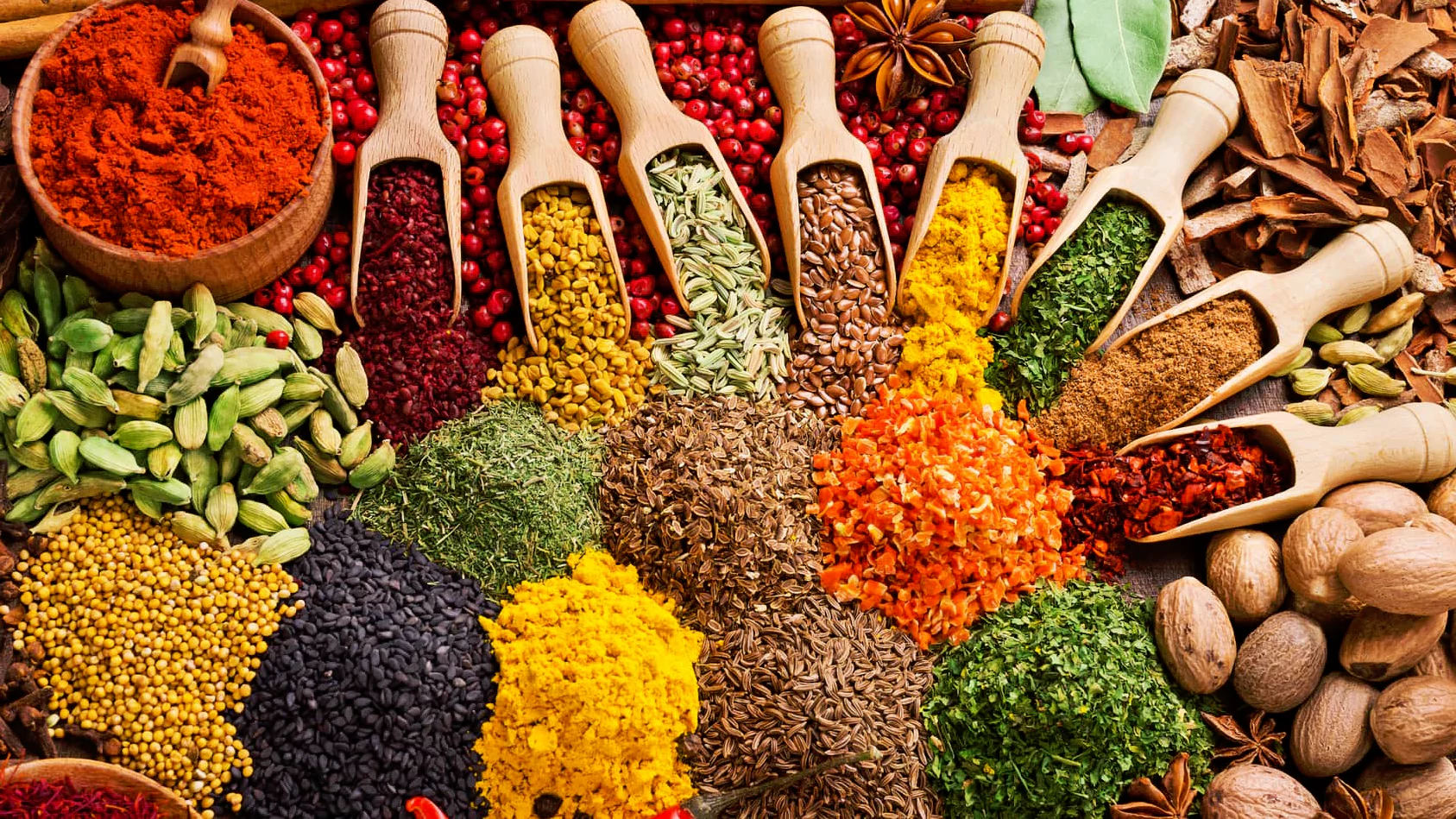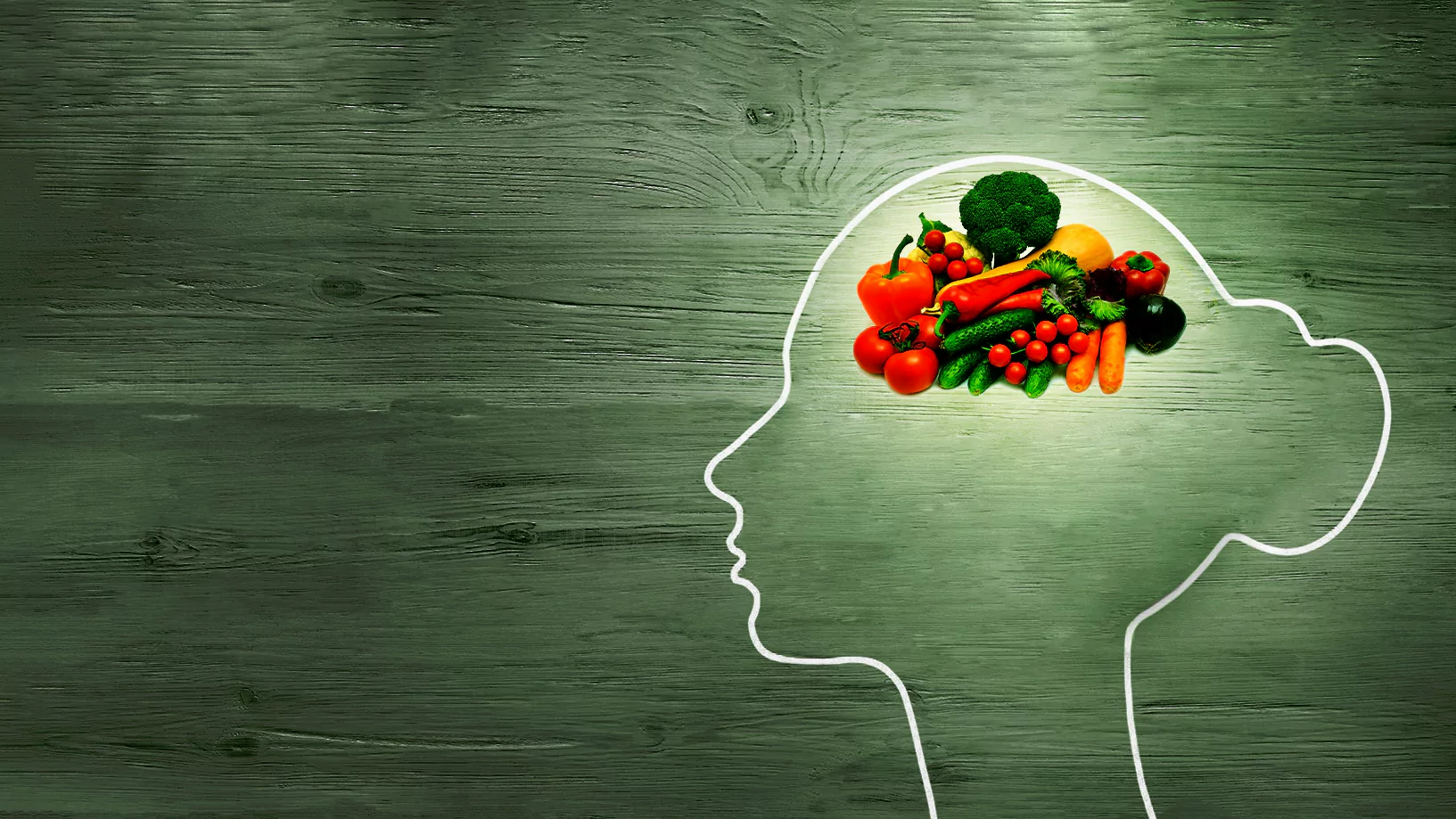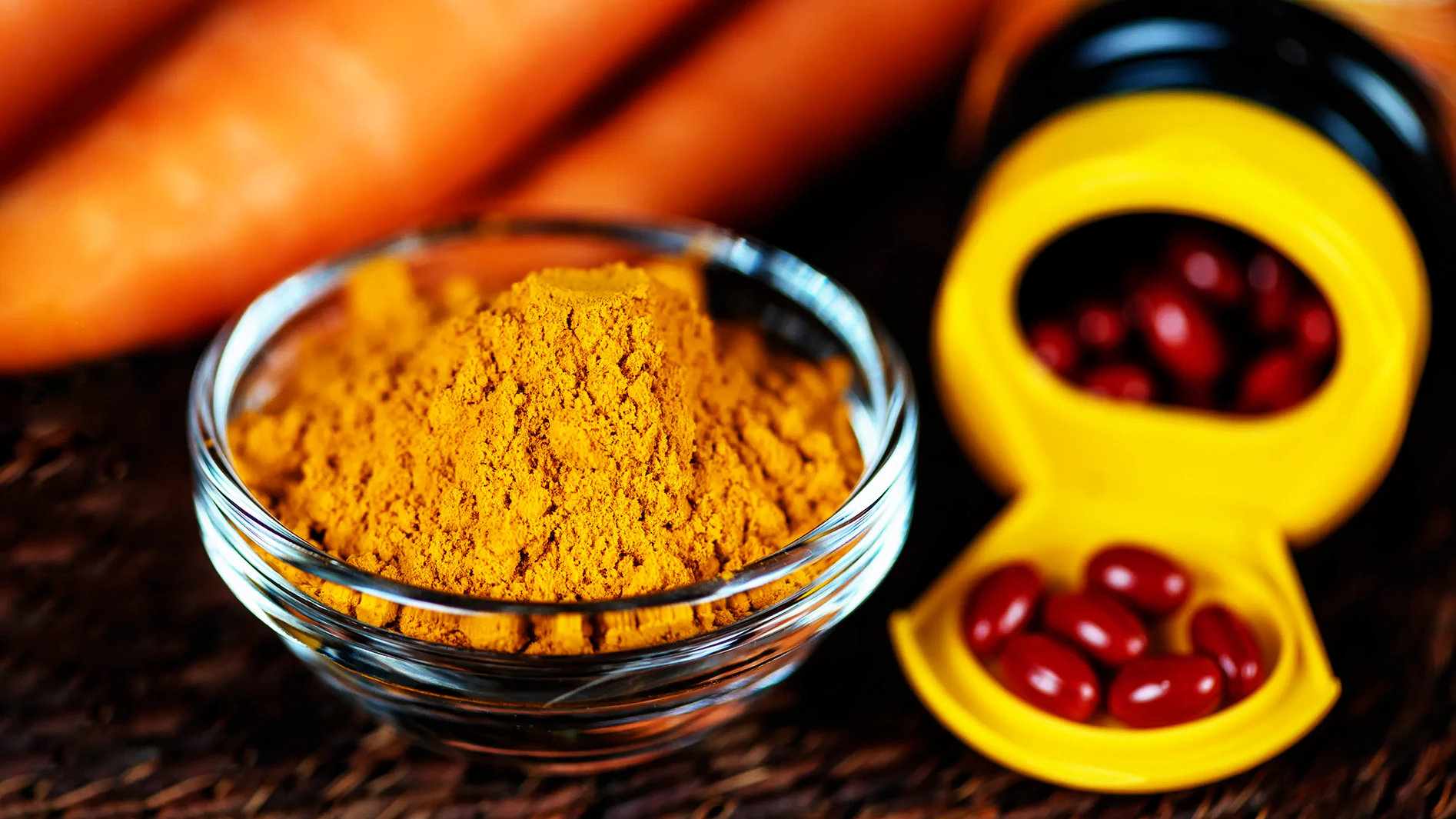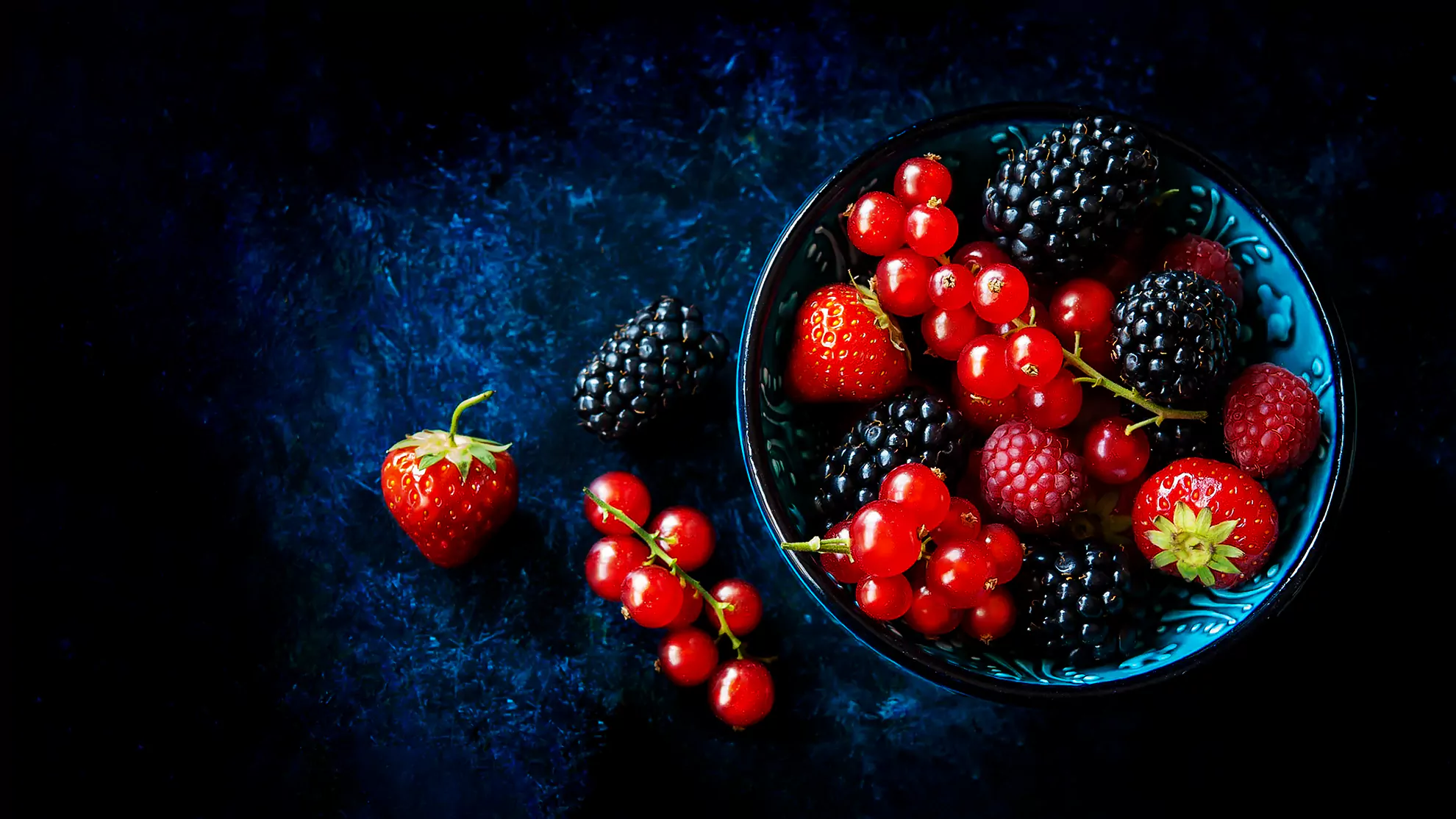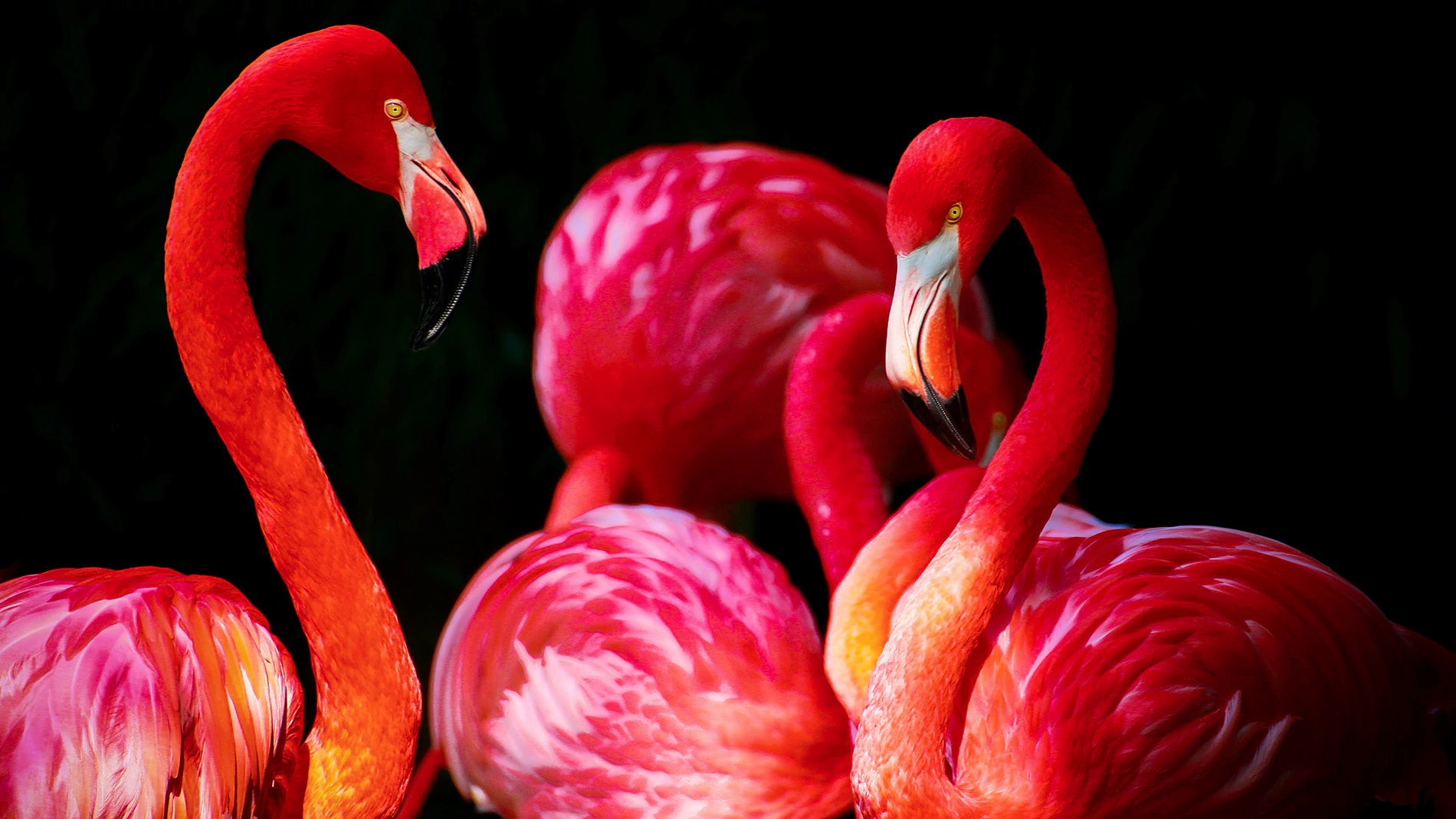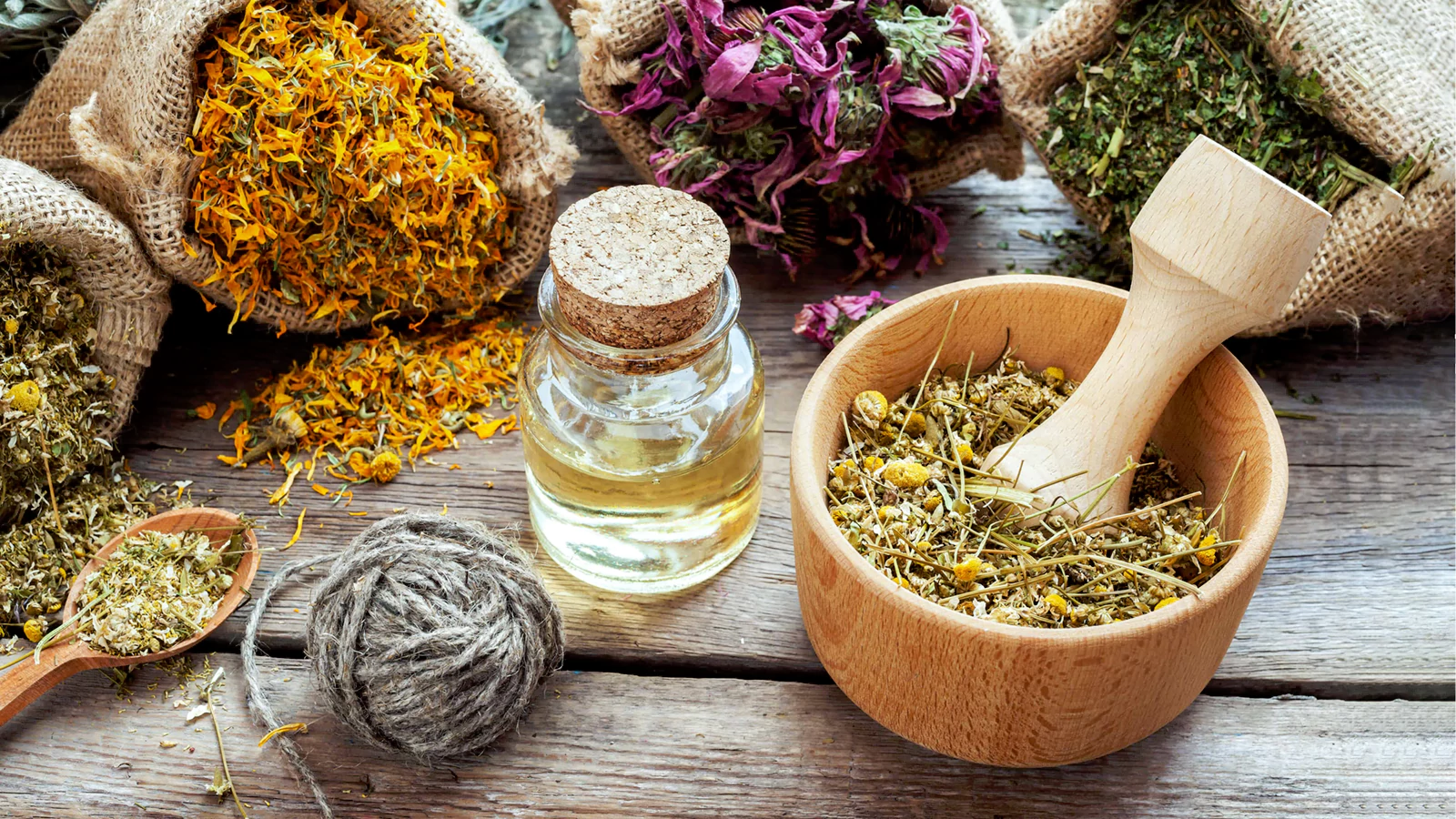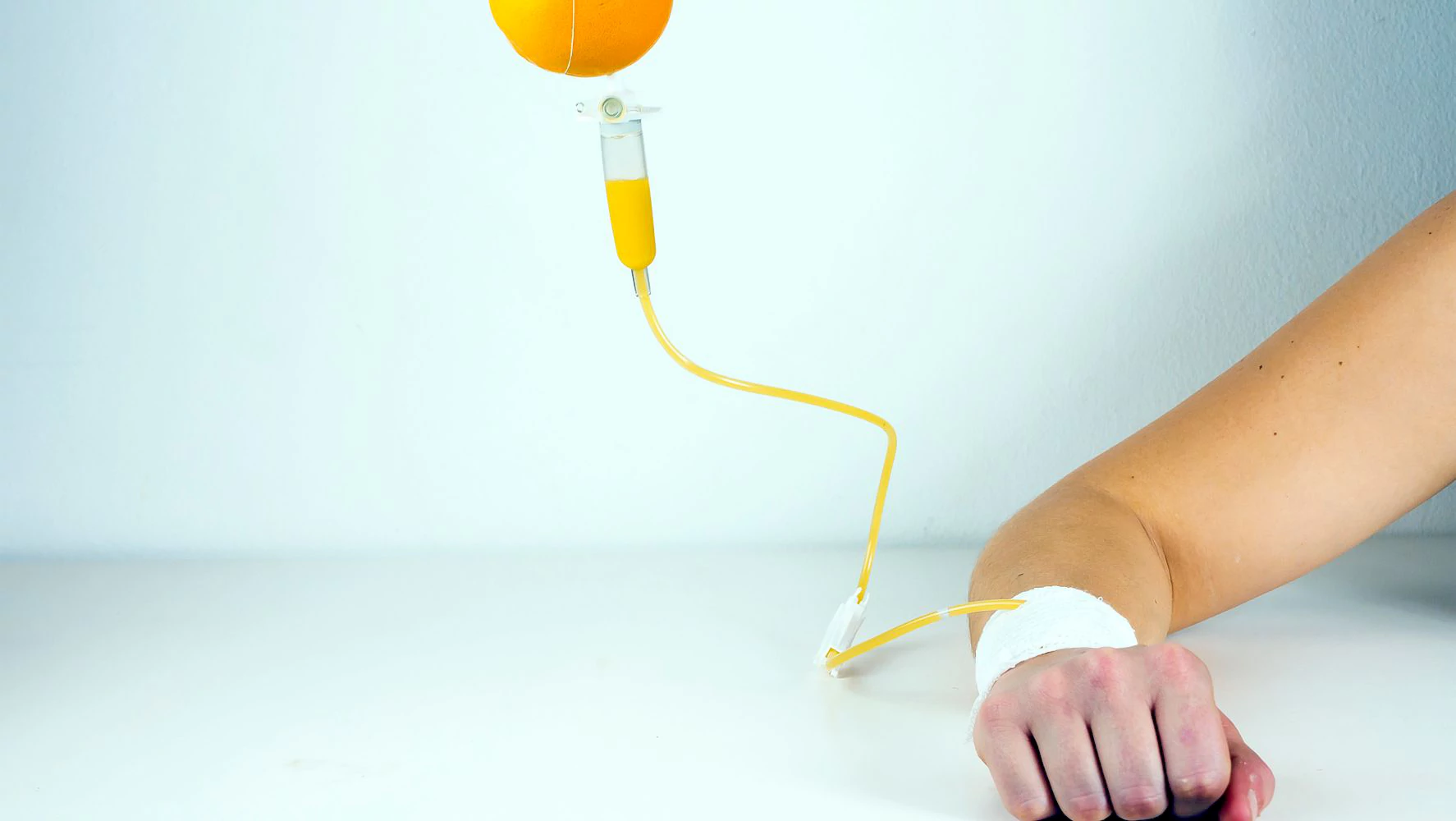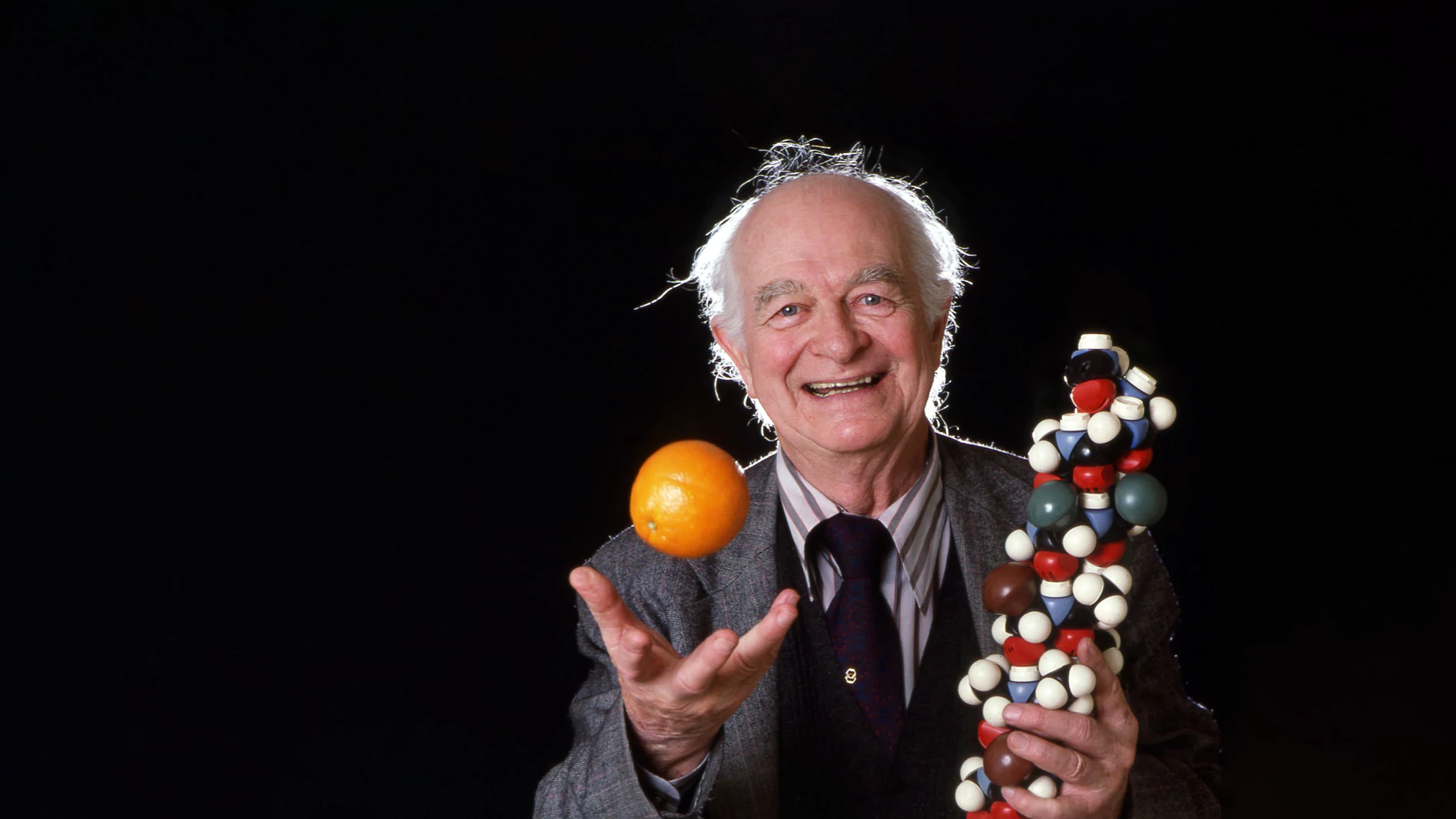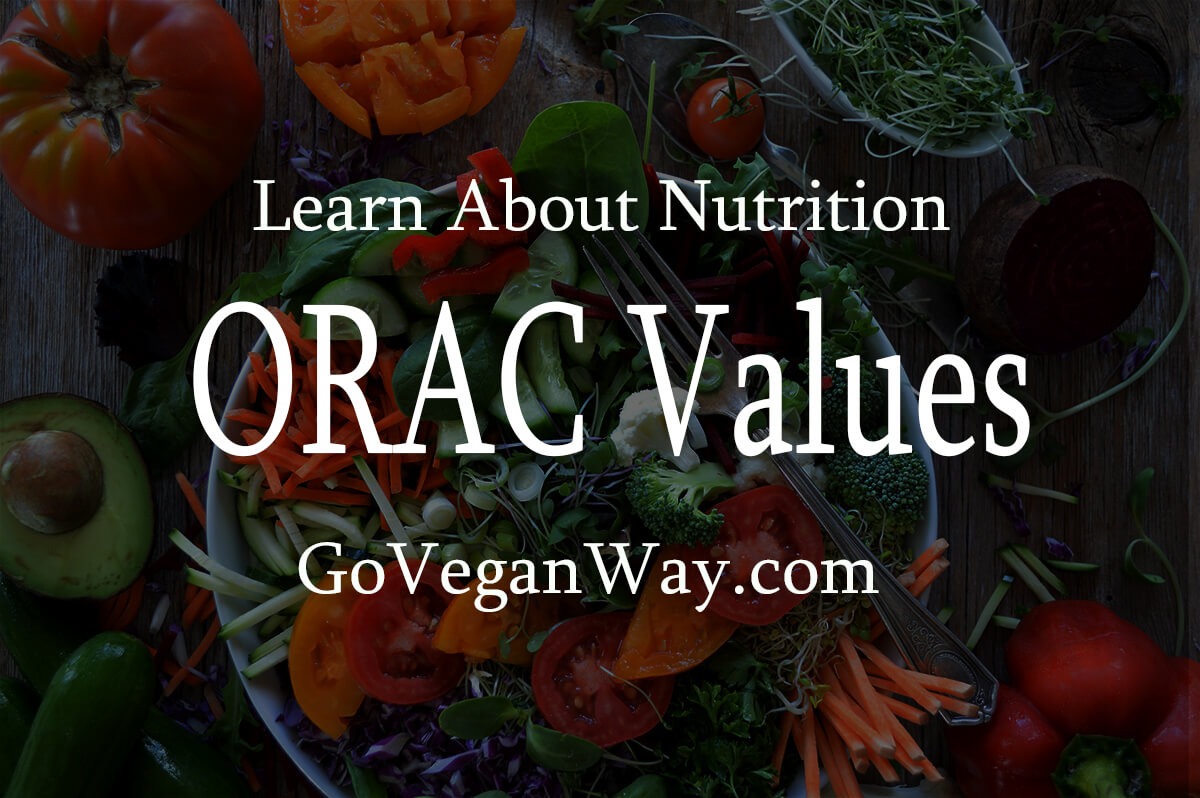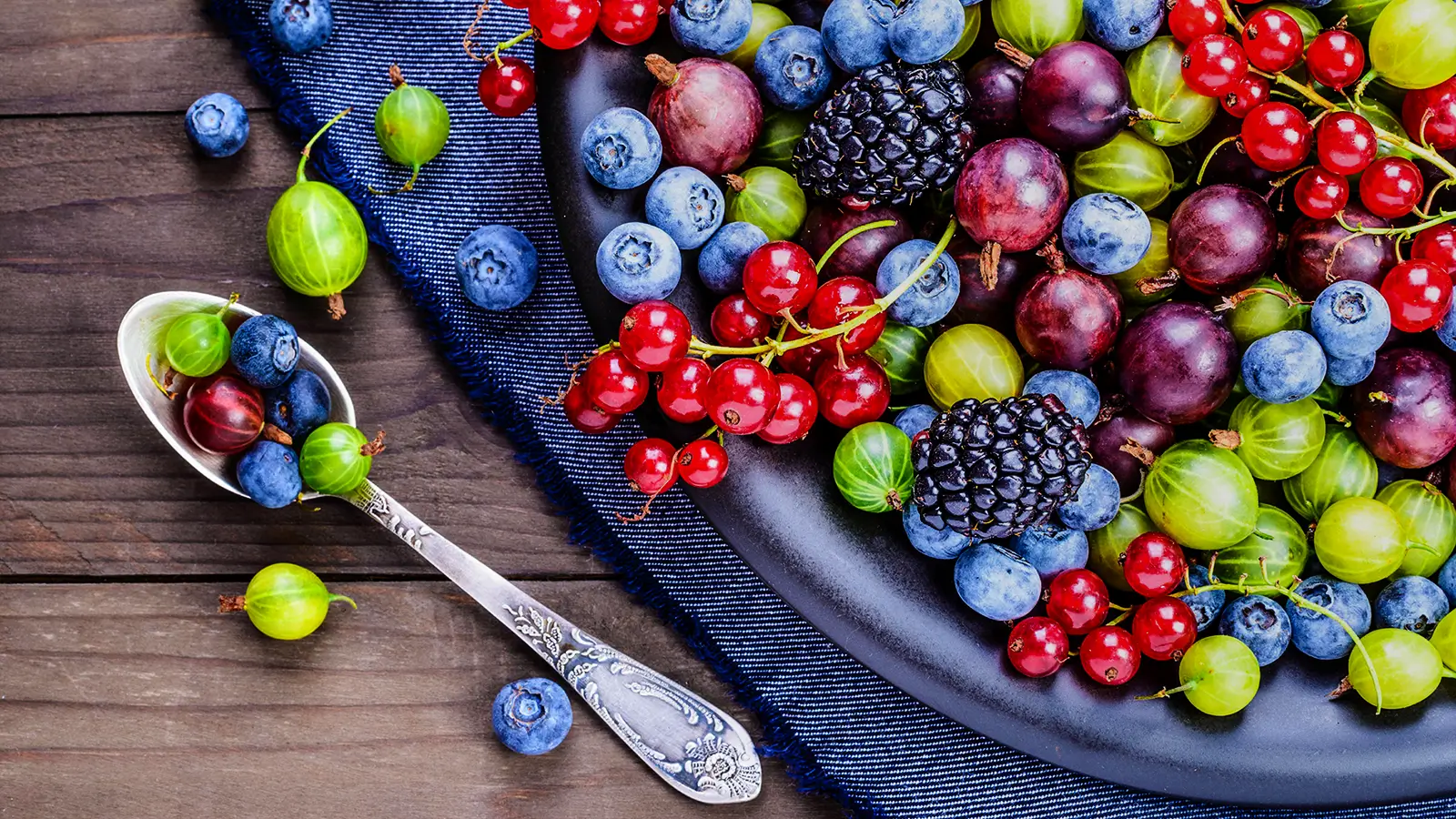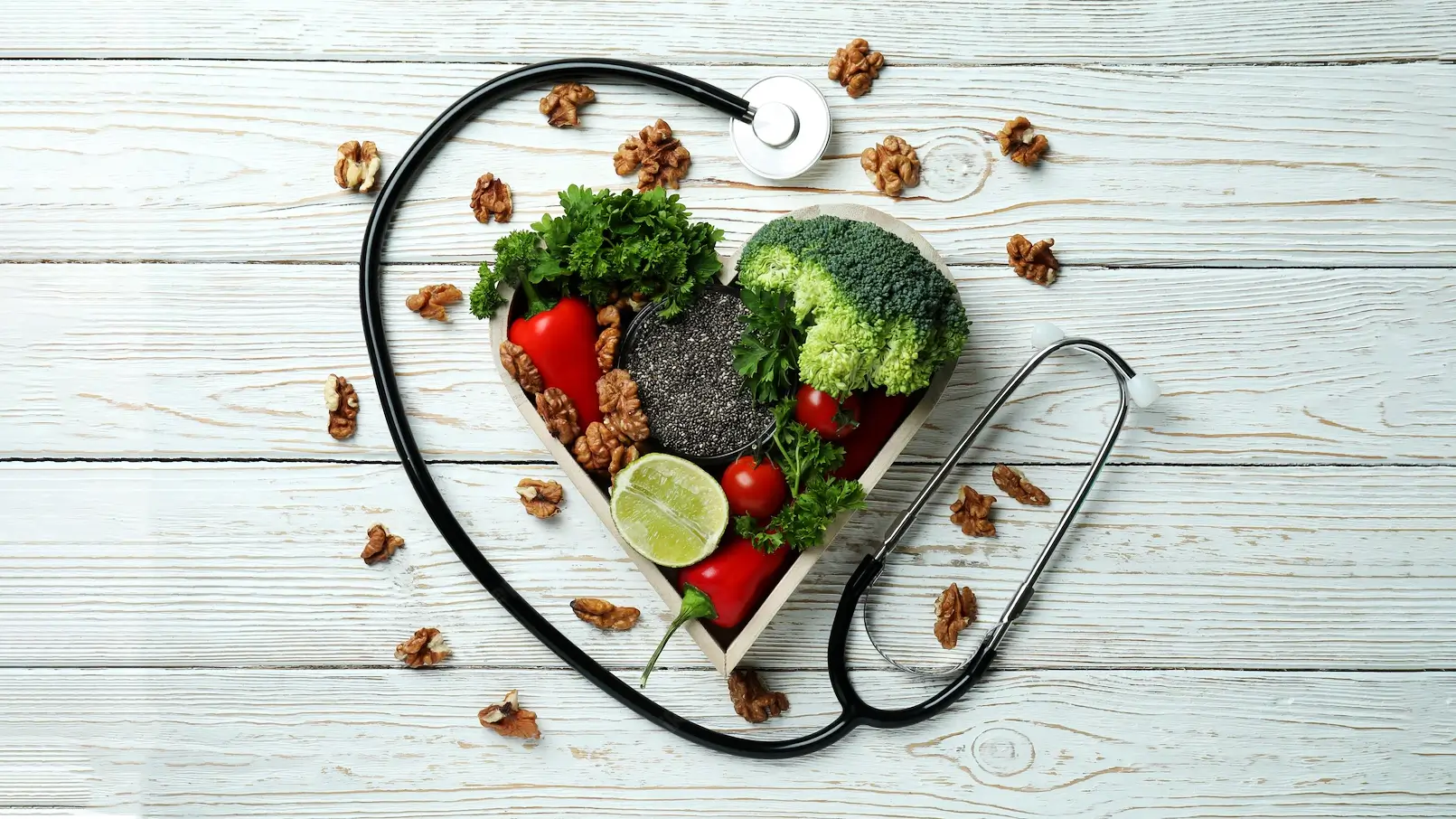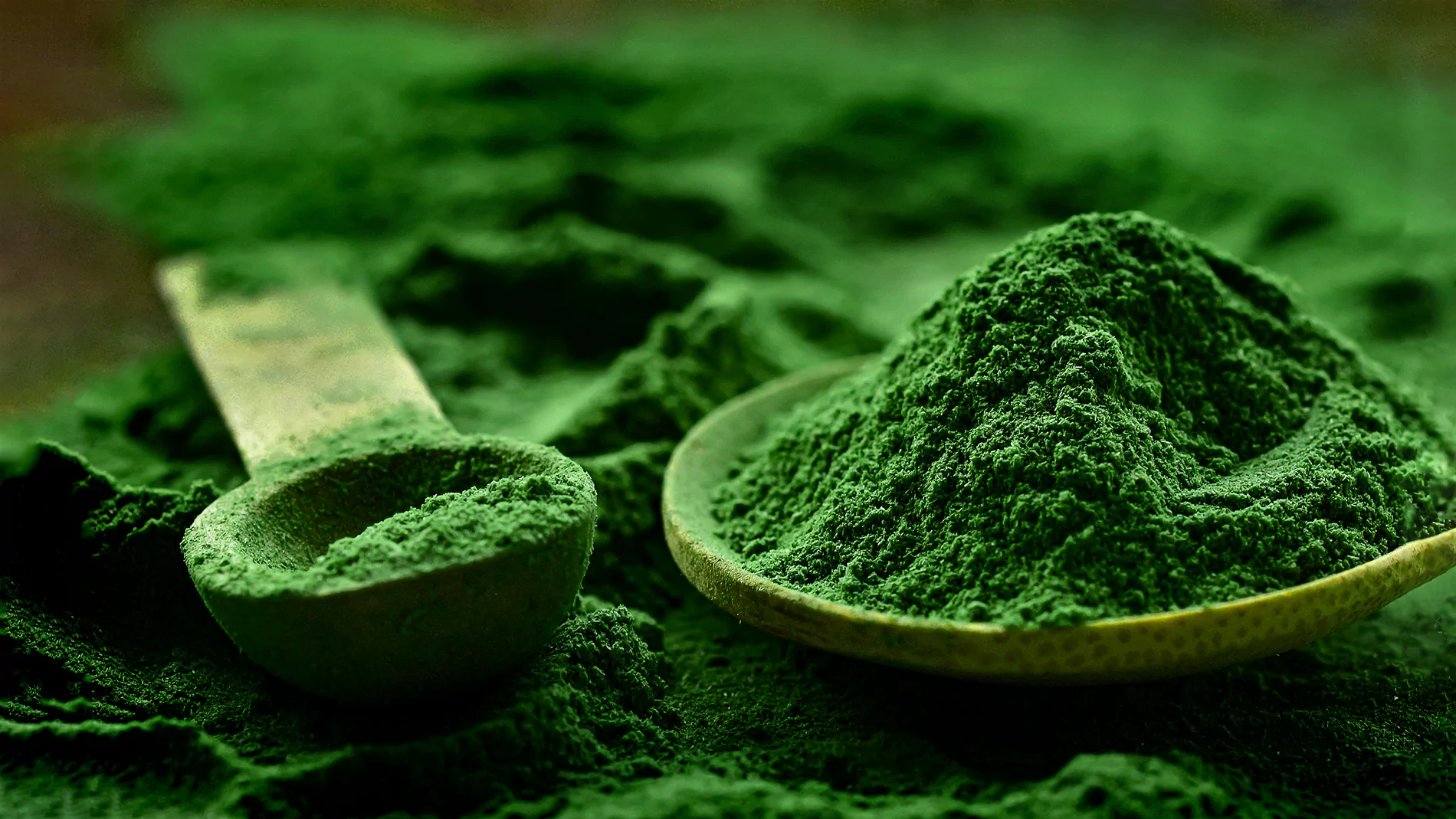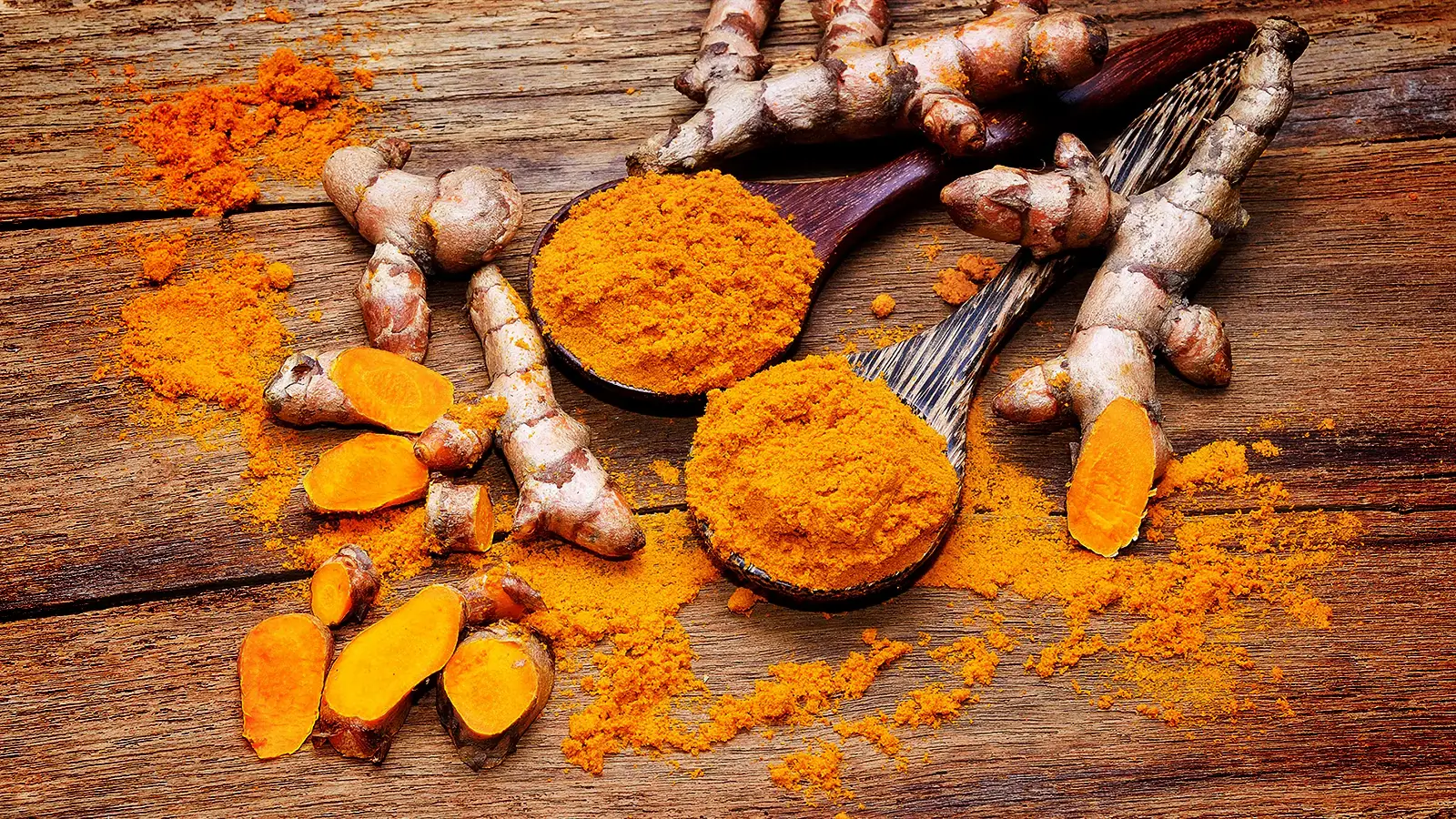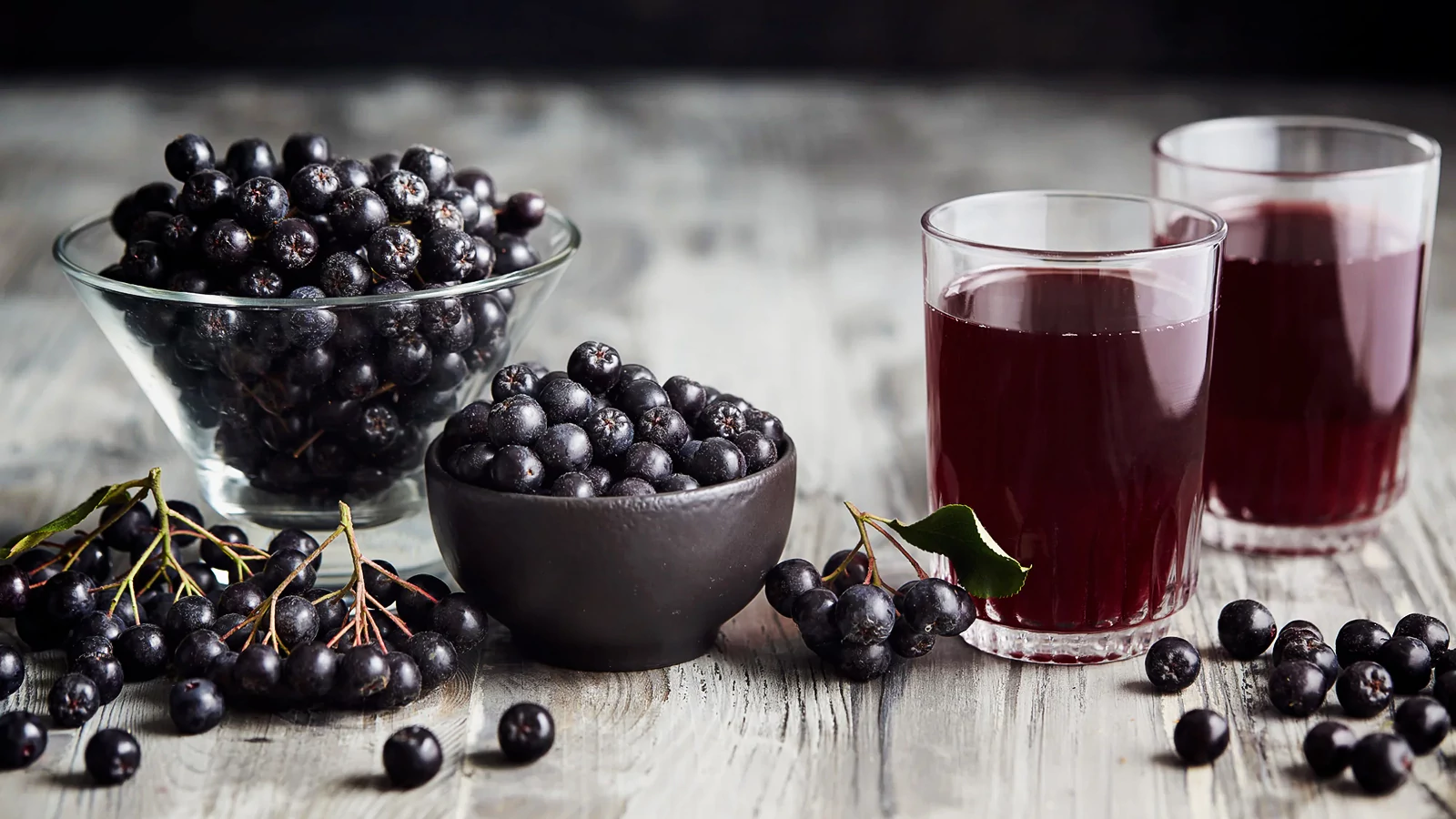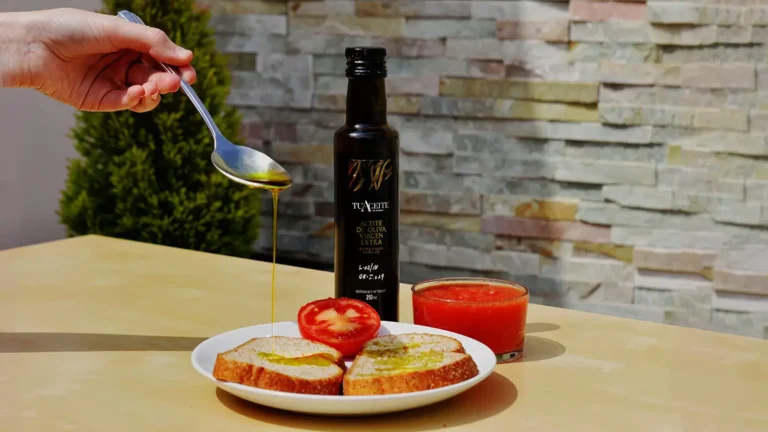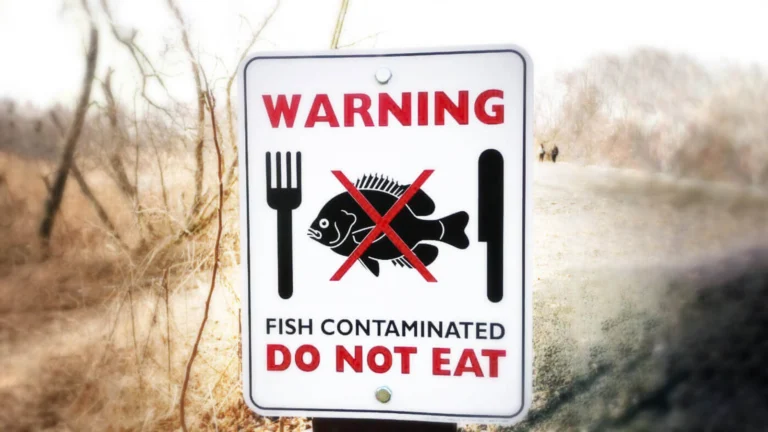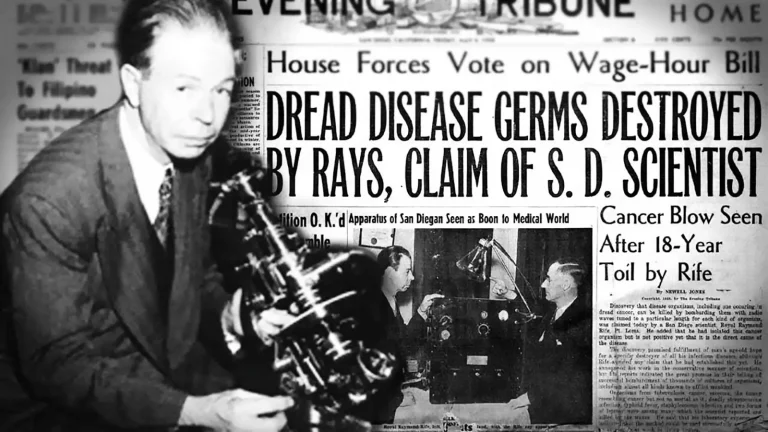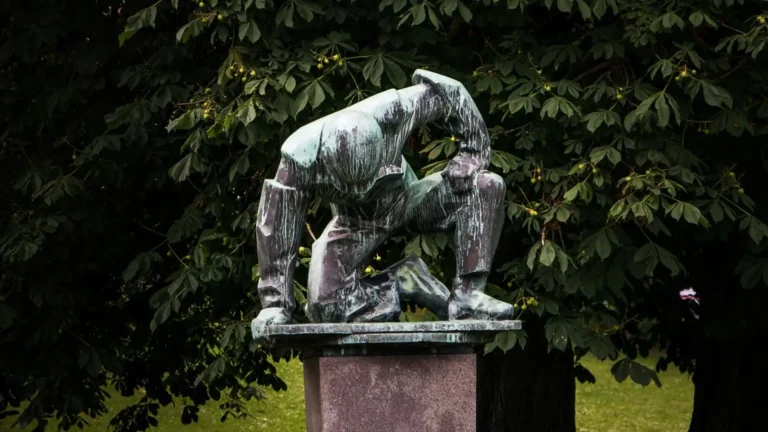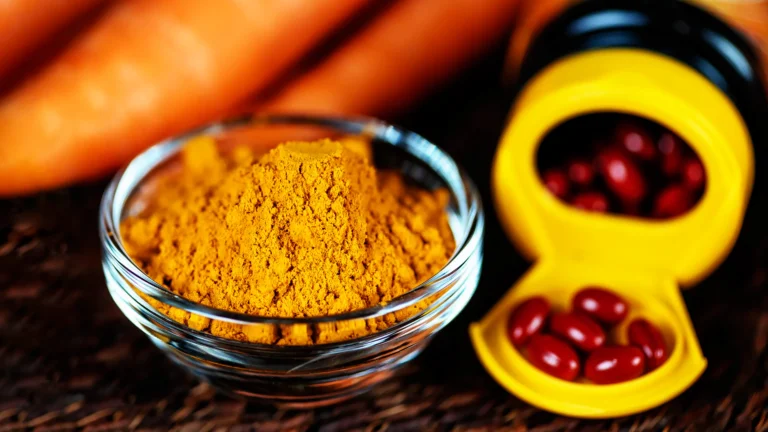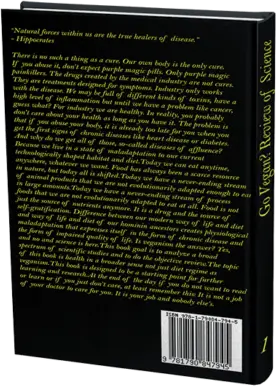Antioxidant Power of Vitamin C: Enhancing Health and Longevity
Vitamin C does not require enzymatic activity to be removed from the body and does not become pro-oxidant but a reduced form of more weak antioxidant.
Milos Pokimica
Written By: Milos Pokimica
Medically Reviewed by: Dr. Xiùying Wáng, M.D.
Updated July 16, 2023Key Takeaways:
– Vitamin C is a water-soluble, non-enzymatic antioxidant that can protect essential molecules in the body from free radical damage. It also plays a role in collagen formation, wound healing, and immune system regulation.
– Vitamin C can scavenge free radicals, neutralize different types of toxins, kill some types of viruses and other infectious microorganisms, and defend against radiation.
– Mega-dosing, especially with intravenous or liposomal preparations, has been shown to be effective for conditions such as cancer and viral infections.
Free radicals.
Without oxygen, there is no life. It is utilized by mitochondria to oxidize some particular compounds along the electron-transport chain, producing energy in the form of ATP (adenosine triphosphate). When an oxygen molecule breaks into single atoms with unpaired electrons it will target the closest stable molecule in an attempt to steal its electron particle resulting in oxidative stress and damage. These are very aggressive molecules. These aggressive molecules are known as free radicals. If the attacking particle loses its electron, it will transform itself into a pro-oxidant or free radical trying to steal someone else’s electron. The process will start a domino effect. Once the process is started the destruction or mutation of a healthy cell is the end outcome of the progression.
Free radicals are created as a part of normal metabolism.
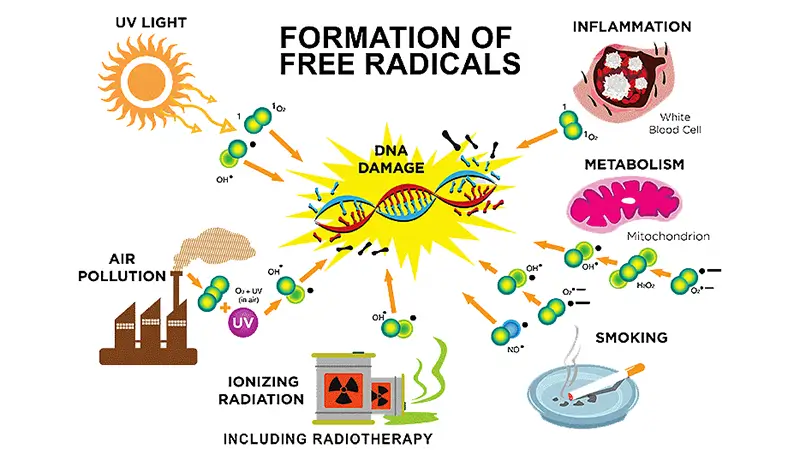
Understanding antioxidants is one of the key areas in the history of modern nutritional research.
Food-derived antioxidants have frequently attracted a lot of attention outside of their nutritional value for their capacity to scavenge free radicals, shield DNA damage, chelate environmental toxins, especially heavy metals, inhibit lipid peroxidation, and defend against radiation. They are even used in traditional medicine as a countermeasure against snake venom.
Vitamin C.
Vitamin C is the primary water-soluble, non-enzymatic antioxidant in plasma and tissues in all living organisms. Not just humans. Carnivores species produce their own vitamin C. It is not a vitamin for them.
Vitamin C plays important roles in many physiological processes, such as collagen formation, wound healing, and immune system regulation. It has also been found to be an important factor in the prevention and treatment of many diseases, such as cardiovascular diseases, cancer, and cataracts. On top of these functions that it has as a vitamin, it is also a water-soluble, non-enzymatic antioxidant and when we supplement with vitamin C we are supplementing to use its antioxidant potential, not its other functions.
If you are not deficient in vitamin C, megadosing would not increase collagen formation for example but its antioxidant properties will be utilized by the body until you reach the saturation level. The saturation level is reached when we flush out excess vitamin C, or in other words, have vitamin C-induced diarrhea. I am not suggesting you do this if you don’t have a serious illness, a regular 1 gram a day will be enough.
Vitamin C as a natural vitamin is found in many different food sources, such as citrus fruits, tomatoes, and leafy greens, making it easy to obtain through diet. Supplementation with vitamin C is also an effective way to ensure that you are receiving the recommended daily amount.
Vitamin C as an antioxidant can shield the body’s essential molecules, including proteins, lipids (fats), carbohydrates, and nucleic acids (DNA and RNA), from harm caused by free radicals and reactive oxygen species (ROS), neutralize different types of toxins, kill some types of viruses and other infectious microorganisms and defend against radiation.
The thesis is that when you go all way down to the molecular level most of the toxins and viruses are just electron scavengers.
Milos Pokimica
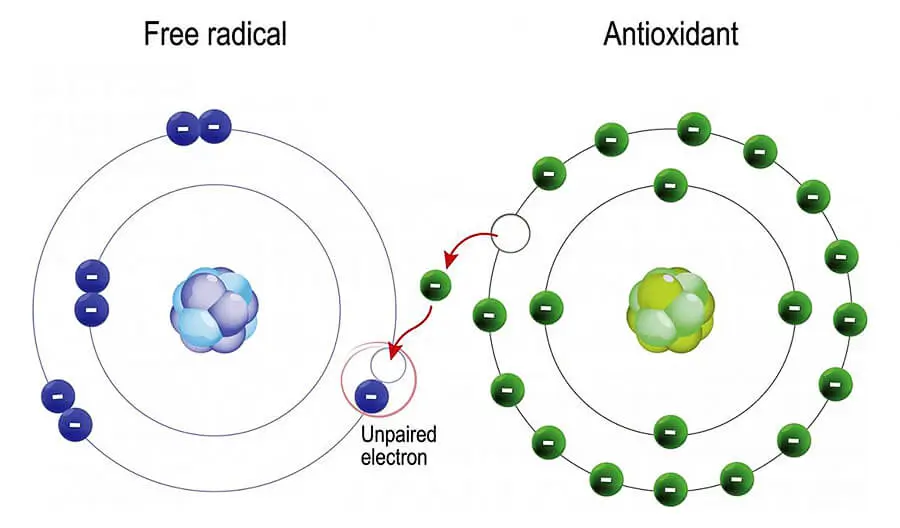
There are toxins that vitamin C does not affect for example these would be toxins that disrupt biochemical reactions by binding to different receptors. Even in these cases, vitamin C has a supportive role in the immune system and detoxification as an antioxidant. This protection is effective even in small doses.
It is also able to recycle oil-soluble vitamin E to some extent (Traber et al., 2011). It would not replace vitamin E because it is not 100 percent recyclable, but to a greater extent, it would help. This is important because vitamin E is deficient in almost the entire population. It is hard to consume because as soon as it hits oxygen it starts to oxidize, so refined oil is not a good source. Also, synthetic vitamin E has no antioxidant capability in vivo (Pearson et al., 2006). According to Pearson et al. (2006), a 27% increase in plasma oxidation activity levels was observed in patients receiving vitamin E supplementation. It is a fake vitamin used for the fortification of food. Unlike vitamin E, vitamin C is easy to consume and is very affordable.
All omnivores, carnivores, and the majority of other animals produce their own vitamin C (Gordon et al., 2020).
Age-related vitamin C metabolism in the animal model.
The human body cannot internally produce vitamin C due to an inherited gene mutation that occurred many generations ago.
This means that humans rely on dietary or supplemental sources of vitamin C to prevent scurvy, a condition caused by vitamin C deficiency that can lead to hemorrhage, fatigue, weak bones, poor immunity, and other symptoms.
Most animals produce their own vitamin C internally via an enzyme called gulonolactone oxidase. However, fruit bats, guinea pigs, and primate monkeys are in the same predicament as humans as they do not synthesize vitamin C naturally.
Researchers have noted that vitamin C levels in humans decline with advancing age apart from variations in dietary intake. However, in certain specific organs and tissues such as the spleen, lungs, eyes, and heart, vitamin C levels actually rise with advancing age.
Animal studies have shown that the capacity to synthesize vitamin C declines over time and becomes a major factor in age-related diseases (Iwama et al., 2012).
Even among animals that naturally synthesize vitamin C, a decline in its production appears to govern the rate of aging.
In the 70s researchers discovered a calcium-binding protein named Regucalcin or SMP30 which is a calcium-binding protein made in the liver that regulates biological aging. SMP30 protein is found within the protein sequences that make up the enzyme (gluconolactone oxidase) that facilitates the natural synthesis of vitamin C in most animals.
In animal models mice bred without the SMP30 protein have a shorter lifespan and are more prone to develop fatty liver conditions compared to wild-type mice who synthesize their own internal source of Vitamin C (Ishigami et al., 2010).
Compared to a normal two-year lifespan of typical laboratory mice, SMP30-absent mice exhibit a shorter lifespan and have a higher mortality rate beginning at three months of age. Furthermore, these mice show 3-fold higher levels of triglycerides and cholesterol in their liver tissue. A diet deprived of vitamin C, standard mouse chow containing around 55 mg/kg of vitamin C, caused them to die after only 135 days. From a normal two-year lifespan of typical laboratory mice to only 135 days. This quantity of vitamin C is insufficient to maintain normal tissue levels.
They did however display symptoms of scurvy such as a bone fracture. They just had increased aging, exhibited three times greater triglycerides and cholesterol, and had blood sugar problems.
When fed a standard-calorie diet and then given glucose, their blood sugar levels rose by 25%, and insulin levels were decreased by 37%. Vitamin C is also required for collagen formation and collagen synthesis and in these mice was measured to be 82% less than in normal mice.
Interestingly calorie restriction has been demonstrated to double the lifespan of most living organisms by increasing oxidative stress-induced SMP30 synthesis.
It is intriguing to ponder how long humans would live if that gene mutation had not occurred leading to vitamin C synthesis being halted. If there are human volunteers for retroviral experiments it would be a great leap in science if we would be able to turn these genes back on. The amount of vitamin C that a mouse produces in its liver depends on several factors, such as its diet, stress level, health status, and genetic background. However, one study estimated that a mouse can produce about 13 mg of vitamin C per 100 g of body weight per day (Duqueet al., 2022). That would amount to 130 mg of vitamin C per kilogram of body mass. If we translate this to an average 80kg human if we take mice as a comparison we should be eating 130mg x 80kg for a total of 10,400mg or around 10 grams of vitamin C every day.
Findings like this suggest that supplemental vitamin C may be important for overall health and well-being, particularly as individuals age. While some organs and tissues may experience an increase in vitamin C levels with age, others may decline, indicating a need for consistent dietary intake or supplementation especially because our diet has changed completely and is no longer congruent with our evolution.
If we look at the fossil record, people who lived in the stone age still had around 130 grams of fiber per day and almost eight times as much vitamin C.
Some estimates suggest that it was around 450 mg per day (de la O, Víctor et al., 2021). Compared to the current recommended daily intake of 90 mg for men and 75 mg for women, this is a much higher amount.
It is believed that the reason for this is that they had a diet mostly based on wild plants, which are much richer in nutrients than the processed foods that are now commonly found on supermarket shelves. This has led to the conclusion that the average person today is not getting enough vitamins and minerals in their diet. To make up for this deficiency, people can take vitamin supplements, eat a more balanced diet, and take part in regular physical activity.
Vitamin C metabolism.
What makes vitamin C a potential supplemental antioxidant is the fact that it does not require enzymatic activity to be removed from the body. Our body just flushes it through the kidneys.
Also, vitamin C does not become a pro-oxidant but just a reduced form of more weak antioxidant dehydroascorbic acid (DHA). It will donate its electron and it would be removed. This offers a potential for mega-dosing if such mega-dosing does not cause side effects and has positive health effects.
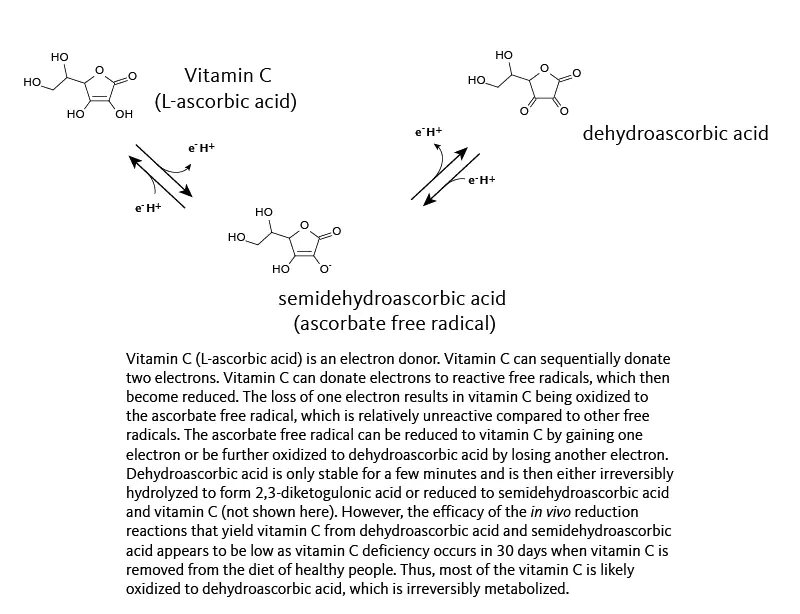
Does vitamin C promote oxidative damage under physiological conditions?
In vitro experiments, there were some reports that interactions between vitamin C and some free metal ions can result in the production of potentially harmful free radicals. While free metal ions are rarely present in vivo, there has been a lot of interest in the possibility that large dosages of vitamin C might increase oxidative damage in living organisms. That was some preliminary research that claimed vitamin C had a pro-oxidant impact but it received a lot of attention. In later reevaluation on the subject, it appeared that these studies had no physiological significance and there were more experiments done. After a careful review of the literature, no compelling scientific evidence today can be found that supplemental vitamin C promotes oxidative damage in physiological conditions.
Optimal intake.
What might be the optimal intake of vitamin C?
So far, science is conflicted but there is somewhat of a consensus. The work of Linus Pauling stimulated public interest in the use of doses greater than 1 g/day of vitamin C to prevent the common cold. In normal circumstances in healthy individuals, the body will automatically maintain the level of vitamin C in the bloodstream.
The RDA for vitamin C is set as same as for any other vitamin and that is the minimum level that is capable of preventing scurvy. Absolute minuscule amount when compared to the real optimal level.
Regular medicine doesn’t think of vitamin C in the same way that natural healers do.
They think of vitamin C as a vitamin that has a role in preventing deficiency and diseases like scurvy but when we take vitamin C, we and our bodies use it as an antioxidant as well. Most people that supplement with vitamin C also supplement not because they need to prevent scurvy but to utilize the antioxidant power of that vitamin. When we think of vitamin C, we think of the antioxidant potential of ascorbic acid and the way we can use it to enhance our health and prevent a wide range of diseases. Scurvy has nothing to do with it.
The easiest way to see the real need for this antioxidant is to measure the levels that our bodies absorb when we mega-dose with it and to measure the levels of excretion. If we take for example 15mg of vitamin C we will absorb 89 percent of it but if you take a supplement that has 1250mg of it the body will absorb 49 percent (Frei et al., 2012). Up to 200mg a day, our body will absorb all of it. A single orange has about 70mg of vitamin C. Then as we go up the absorption will decline. The overall absorption in mg will still go up but the percentage of absorption will decrease.
In normal conditions, our body’s evolved to absorb at least 200mg of it a day and maybe some percentage more than that. In addition, in our kidneys, vitamin C is reabsorbed back into the bloodstream to maintain our blood levels in the range of about 70 to 80 micromoles per liter and that is the level we can reach in vitamin C intake of about 200mg per day.
In normal conditions even if we megadose with 5000mg the kidneys will excrete it to maintain a level of about 80 micromoles. So, the real RDA for vitamin C is 200mg in normal conditions and the current acknowledged RDA by the medical establishment for adult nonsmoking men and women is 60 mg/d. But again, this is also partially the truth. You have seen me write more than once “in normal conditions“.
When we have abnormal exposure to toxins or infections of any sort the body will absorb as much as it can.
When you are not sick and you take vitamin C in the oral form there will be a point when you will suffer from vitamin C induced diarrhea. If you have constipation this might help you as a natural cure. The level of this threshold for megadose-induced vitamin C diarrhea is individual. This threshold is about 2000 to 3000mg for an adult healthy male depending on your overall inflammation level and overall antioxidant intake. If you smoke and eat junk and your antioxidant intake is negligible your threshold will go up. People that have cancer or AIDS can take in some cases as much as 30 grams of it without having a laxative effect.
For example, Cigarette smoking or second-hand exposure to cigarette smoke contributes to increased blood lead concentration and a state of chronic low-level lead exposure.
An intervention trial in 75 adult male smokers found that supplementation with 1,000 mg/day of vitamin C resulted in significantly lower blood lead concentration over a four-week treatment period compared to a placebo (Abam et al., 2008). A lower dose of 200 mg/day did not significantly affect blood lead concentration, although serum vitamin C concentrations were not different from those in the group who took 1,000 mg/day.
You don’t have to megadose on vitamin C because the body does not have the ability to store it. It is a water-soluble antioxidant. You would have constant uncontrollable diarrhea. If you take vitamin C regularly you will have some of the benefits, this means 1 to 2 grams or as much as you can tolerate per day and most of it will be excreted out with the urine. The best approach is to eat antioxidant-rich whole foods, take 1 to 2 grams of vitamin C daily, and if you like you can also take other antioxidants and antioxidant supplements and some of them are much superior to vitamin C. Technology had come a long way since the 1970s and I will describe some of the supplements that I recommend in correlated articles.
Megadosing.
If you have swine flu or cancer then intravenous vitamin C is a must.
If you have cancer you never have to get off of it. Unlike chemotherapy, there are no vitamin C side effects. It is chemotherapy that can be taken for the rest of your life and just this fact is what terrifies the regular cancer industry.
The intravenous vitamin C shots are expensive and so is the liposomal vitamin C. There are videos on YouTube where people are trying to make their liposomal vitamin C at home with just lecithin and ascorbic acid mixed in together and then energized inside ultrasonic cleaner for encapsulation. Does this work, I don’t know.
Have you ever wished you could get the many health benefits of high-dose intravenous (IV) vitamin C at home, at a low cost? Discover a cheap and simple way to multiply the effectiveness of oral Vitamin C. One gram of this simple megavitamin C can do the work of up to 8 grams of pure vitamin C by intravenous injection! Wellness expert Arthur Doerksen shows you how to make it in your kitchen in less than 10 minutes.
Liposomal encapsulation is a process where fat is used to encapsulate some molecules inside it. In this case, it is vitamin C so when cells metabolize the fat the inner part of the compound gets released. It is a nice way to trick the body.
Liposomal vitamin C also gets released inside the cell not into the bloodstream so it is more potent even than intravenous vitamin C because not all of the ascorbic acid that is in the blood will get absorbed into the cells.
When ascorbic acid is in the blood there are molecules known as transporters that take that vitamin C and integrate it into the cell but when phosphatidylcholine encapsulated vitamin C comes into contact with a cell there is no need for transport because cells pass through phospholipids right in. Phosphatidylcholine is a fat molecule that cell membranes are made of. When ascorbic acid is in the blood then some will be urinated out. In liposomal encapsulation, all of the vitamin C goes directly to the cells inside the body.
If you want to make homemade liposomal vitamin C you need to understand that phospholipids are not the same as lecithin. They are extracted from lecithin and commercial products are the real deal, however, I don’t know if homemade liposomal have any effectiveness at all or if are they as potent as pharma grade. Doctors that do vitamin C as a treatment generally consider 1000mg of liposomal vitamin C to be as effective as 15000mg of oral vitamin C and liposomal form does not cause a laxative effect.
If we really go into it, we can see that mega-dosing on universal antioxidants and antioxidants that do not have enzymatic breakdown metabolism like in this case liposomal vitamin C have the ability to easily wipe out more than 50 percent of prescription medications, from different types of chemotherapy onward. And the medical industry will do everything and I will say this again, the medical industry will do anything to forbid you to use it. You will have to call a lawyer to force the MD to give you intravenous ascorbic acid. And it is not a coincidence or misinformation but as Pauling use to say, it is a well-organized conspiracy.
Mega-dosing of liposomal ascorbic acid encapsulation is also good for an overall state of inflammation but especially for inflamed gums and teeth.
Vitamin C stimulates the immune system by more than 20 identified mechanisms. A low level of painless inflammation is something that most people don’t realize that they have because of the toxic overload and bad diet but in the long run, it will kill you.
Taking liposomal vitamin C, plus eating high quality antioxidant-rich whole plant food diet will have a big impact on the immune system, overall lowering of inflammation, prevention of cancer, prevention of periodontal diseases, prevention of infections from different viruses, and overall longevity and well-being.
Eating animal products that do not have any type of antioxidant in them but just a high level of dead meat bacteria will create endotoxemia and inflammation. Plus if we add on top of that a whole range of pollutants from the environment it is a recipe for chronic, in initial stages painless inflammation, then a whole range of painful diseases in stage two like cancer and then shortening of lifespan and death.
Stress response, sleep deprivation, and exercise.
There is also evidence that vitamin C can lower the cortisol level and could mitigate stress response in rats, both in terms of regular stress or sleep deprivation (Olayaki et al., 2015) or exercise (Peters et al., 2001).
At least in the case of plasma cortisol, which could help to improve stress tolerance. Elevated cortisol levels can induce a state of insomnia and fatigue and anxiety. Cortisol is a hormone released by the adrenal glands in response to stress.
If you drink coffee and on top of that have a bad diet that creates inflammation the response of the body will be to increase cortisol levels to fight that inflammation. It is the strongest anti-inflammatory hormone in the body. Corticosteroids are prescribed for inflammation as well. But besides lowering inflammation once it gets into the bloodstream, cortisol is also responsible for relaying the news of stress to all parts of the body and mind. Cortisol is the hormone that triggers the so-called “fight or flight” response to stress. Evolutionary is a hormone that puts the body and mind in a survival state. It is an essential hormone to live. But if we are overexposed to stress, high levels of stress hormones will exhaust the body’s physical resources, impair learning and memory, and will make people susceptible to depression.
If you have issues with anxiety and adrenal insufficiency vitamin C can help. It helps to reduce both the physical and psychological effects of stress on people. One more plant that has phytochemicals that are known to a lowering of cortisol and epinephrine effects is Rooibos (Aspalathus linearis) which is commonly consumed as tea (Schloms et al., 2014). Flavones from the tea have the effect of binding and neutralizing enzymes that adrenal glands use to make glucocorticoid hormones like cortisol and epinephrine.
These flavones decreased levels of cortisol and epinephrine by 4 times. Researchers were alarmed that they might even lower testosterone levels but it was not the case. Rooibos tea just lowered the circulating glucocorticoid levels. And it is a natural way of lowering stress response in the form of a cup or two of tea in a day. When looking at vitamin C the extrapolated doses for people’s stress management will be around 1,000 mg. It is a dose that was found to be helpful in the stress study.
If you want to increase vitamin C intake through food intake you need to know that vitamin C is destroyed by cooking and exposure to light. Vitamin C starts to degrade at 60-70°C.
If you want to take a supplement and don’t want liposomal form then the best way is to take it in a time-released preparation that works over the course of a day. Another solution would be to take vitamin C supplements in time intervals throughout the day.
In the video below cardiologist and lawyer Dr. Thomas Levy explain vitamin C’s role in disease treatment and review the science of what vitamin C has been proven to do. If you want to know more about intravenous vitamin C’s benefits & how it can save lives, then this episode is for you.
Conclusion:
- Free radicals are created as a part of normal metabolism and cannot be avoided completely.
- Vitamin C is the primary water-soluble, non-enzymatic antioxidant in plasma and tissues in all living organisms.
- All omnivores, carnivores, and the majority of other animals produce their own vitamin C.
- What makes vitamin C a potential supplemental antioxidant is the fact that it does not require enzymatic activity to be removed from the body. Our body just flushes it through the kidneys.
- Vitamin C does not become a pro-oxidant but just a reduced form of more weak antioxidant dehydroascorbic acid (DHA). It will donate its electron and it would be removed.
- No compelling scientific evidence today can be found that supplemental vitamin C promotes oxidative damage in physiological conditions at any dosage.
- In normal conditions, our bodies evolved to absorb at least 200mg of it a day.
- When we have abnormal exposure to toxins or infections of any sort the body will absorb as much as it can. People that have cancer or AIDS can take in some cases as much as 30 grams of it without having a laxative effect.
- The level of this threshold for megadose-induced vitamin C diarrhea is individual. This threshold is about 2000 to 3000mg for an adult healthy male depending on overall inflammation level and overall antioxidant intake.
- The best approach is to eat antioxidant-rich whole foods and take 1 to 2 grams of vitamin C daily.
- If you have cancer, pneumonia, or other types of serious infections then intravenous vitamin C is a must.
- Vitamin C has been proven to be a powerful antiviral, antifungal, antibacterial, anti-melanoma cell, anti-rheumatoid cell, and anti-leukemia cell agent.
- Liposomal vitamin C mg per mg is as potent as intravenous vitamin C and can be taken orally.
- Mega-dosing of liposomal ascorbic acid encapsulation is good for an overall state of inflammation but especially for inflamed gums and teeth.
- Vitamin C can lower the cortisol level and could mitigate stress response both in terms of regular stress or sleep deprivation or exercise.
- Vitamin C is destroyed by cooking and exposure to light.
FAQ
References:
Passages selected from a book: “Go Vegan? Review of Science: Part 3” [Milos Pokimica]
- Frei, B., Birlouez-Aragon, I., & Lykkesfeldt, J. (2012). Authors’ perspective: What is the optimum intake of vitamin C in humans?. Critical reviews in food science and nutrition, 52(9), 815–829. https://doi.org/10.1080/10408398.2011.649149
- Olayaki, L. A., Sulaiman, S. O., & Anoba, N. B. (2015). Vitamin C Prevents Sleep Deprivation-induced Elevation in Cortisol and Lipid Peroxidation in the Rat Plasma. Nigerian journal of physiological sciences : official publication of the Physiological Society of Nigeria, 30(1-2), 5–9. [PubMed]
- Peters, E. M., Anderson, R., Nieman, D. C., Fickl, H., & Jogessar, V. (2001). Vitamin C supplementation attenuates the increases in circulating cortisol, adrenaline and anti-inflammatory polypeptides following ultramarathon running. International journal of sports medicine, 22(7), 537–543. https://doi.org/10.1055/s-2001-17610
- Schloms, L., & Swart, A. C. (2014). Rooibos flavonoids inhibit the activity of key adrenal steroidogenic enzymes, modulating steroid hormone levels in H295R cells. Molecules (Basel, Switzerland), 19(3), 3681–3695. https://doi.org/10.3390/molecules19033681
- Abam, E., Okediran, B. S., Odukoya, O. O., Adamson, I., & Ademuyiwa, O. (2008). Reversal of ionoregulatory disruptions in occupational lead exposure by vitamin C. Environmental toxicology and pharmacology, 26(3), 297–304. https://doi.org/10.1016/j.etap.2008.05.008
- Kubin, A., Kaudela, K., Jindra, R., Alth, G., Grünberger, W., Wierrani, F., & Ebermann, R. (2003). Dehydroascorbic acid in urine as a possible indicator of surgical stress. Annals of nutrition & metabolism, 47(1), 1–5. https://doi.org/10.1159/000068905
- Klenner, F.R. (2014). Observations On the Dose and Administration of Ascorbic Acid When Employed Beyond the Range Of A Vitamin In Human Pathology. Journal of Orthomolecular Medicine, 13, 198-210. [PDF]
- Wilson, J. X. (2009). Mechanism of action of vitamin C in sepsis: Ascorbate modulates redox signaling in endothelium. BioFactors (Oxford, England), 35(1), 5. https://doi.org/10.1002/biof.7
- Giladi, A. M., Dossett, L. A., Fleming, S. B., Abumrad, N. N., & Cotton, B. A. (2011). High-dose antioxidant administration is associated with a reduction in post-injury complications in critically ill trauma patients. Injury, 42(1), 78–82. https://doi.org/10.1016/j.injury.2010.01.104
- Long, C. R., Maull, K. I., Krishnan, R., Laws, H. L., Geiger, J. W., Borghesi, L., Franks, W. R., Lawson, T., & Sauberlich, H. E. (2003). Ascorbic acid dynamics in the seriously ill and injured. Journal of Surgical Research, 109(2), 144–148. https://doi.org/10.1016/s0022-4804(02)00083-5
- Giladi, A. M., Dossett, L. A., Fleming, S. B., Abumrad, N. N., & Cotton, B. A. (2011). High-dose antioxidant administration is associated with a reduction in post-injury complications in critically ill trauma patients. Injury, 42(1), 78–82. https://doi.org/10.1016/j.injury.2010.01.104
- Pearson, P., Lewis, S. A., Britton, J., Young, I. S., & Fogarty, A. (2006). The pro-oxidant activity of high-dose vitamin E supplements in vivo. BioDrugs : clinical immunotherapeutics, biopharmaceuticals and gene therapy, 20(5), 271–273. https://doi.org/10.2165/00063030-200620050-00002
- Gordon, D. S., Rudinsky, A. J., Guillaumin, J., Parker, V. J., & Creighton, K. J. (2020). Vitamin C in Health and Disease: A Companion Animal Focus. Topics in companion animal medicine, 39, 100432. https://doi.org/10.1016/j.tcam.2020.100432
- Iwama, M., Amano, A., Shimokado, K., Maruyama, N., & Ishigami, A. (2012). Ascorbic acid levels in various tissues, plasma and urine of mice during aging. Journal of nutritional science and vitaminology, 58(3), 169–174. https://doi.org/10.3177/jnsv.58.169
- Ishigami A. (2010). Yakugaku zasshi : Journal of the Pharmaceutical Society of Japan, 130(1), 25–28. https://doi.org/10.1248/yakushi.130.25
- Duque, P., Vieira, C. P., Bastos, B., & Vieira, J. (2022). The evolution of vitamin C biosynthesis and transport in animals. BMC ecology and evolution, 22(1), 84. https://doi.org/10.1186/s12862-022-02040-7
- de la O, V., Zazpe, I., Martínez, J. A., Santiago, S., Carlos, S., Zulet, M. Á., & Ruiz-Canela, M. (2021). Scoping review of Paleolithic dietary patterns: a definition proposal. Nutrition research reviews, 34(1), 78–106. https://doi.org/10.1017/S0954422420000153
Related Posts
Do you have any questions about nutrition and health?
I would love to hear from you and answer them in my next post. I appreciate your input and opinion and I look forward to hearing from you soon. I also invite you to follow us on Facebook, Instagram, and Pinterest for more diet, nutrition, and health content. You can leave a comment there and connect with other health enthusiasts, share your tips and experiences, and get support and encouragement from our team and community.
I hope that this post was informative and enjoyable for you and that you are prepared to apply the insights you learned. If you found this post helpful, please share it with your friends and family who might also benefit from it. You never know who might need some guidance and support on their health journey.
– You Might Also Like –

Learn About Nutrition
Milos Pokimica is a doctor of natural medicine, clinical nutritionist, medical health and nutrition writer, and nutritional science advisor. Author of the book series Go Vegan? Review of Science, he also operates the natural health website GoVeganWay.com
Medical Disclaimer
GoVeganWay.com brings you reviews of the latest nutrition and health-related research. The information provided represents the personal opinion of the author and is not intended nor implied to be a substitute for professional medical advice, diagnosis, or treatment. The information provided is for informational purposes only and is not intended to serve as a substitute for the consultation, diagnosis, and/or medical treatment of a qualified physician or healthcare provider.NEVER DISREGARD PROFESSIONAL MEDICAL ADVICE OR DELAY SEEKING MEDICAL TREATMENT BECAUSE OF SOMETHING YOU HAVE READ ON OR ACCESSED THROUGH GoVeganWay.com
NEVER APPLY ANY LIFESTYLE CHANGES OR ANY CHANGES AT ALL AS A CONSEQUENCE OF SOMETHING YOU HAVE READ IN GoVeganWay.com BEFORE CONSULTING LICENCED MEDICAL PRACTITIONER.
In the event of a medical emergency, call a doctor or 911 immediately. GoVeganWay.com does not recommend or endorse any specific groups, organizations, tests, physicians, products, procedures, opinions, or other information that may be mentioned inside.
Editor Picks –
Milos Pokimica is a health and nutrition writer and nutritional science advisor. Author of the book series Go Vegan? Review of Science, he also operates the natural health website GoVeganWay.com
Latest Articles –
Top Health News — ScienceDaily
- Indoor tanning triples melanoma risk and seeds broad DNA mutationson December 15, 2025
Researchers discovered that tanning beds cause widespread, mutation-laden DNA damage across almost all skin, explaining the sharply increased melanoma risk. Single-cell genomic analysis revealed dangerous mutations even in sun-protected regions. Survivors’ stories underscore how early tanning habits have lifelong consequences. The findings push for stricter policies and clear public warnings.
- Researchers identify viral suspects that could be fueling long COVIDon December 15, 2025
Scientists are uncovering a new possibility behind long COVID’s stubborn symptoms: hidden infections that awaken or emerge alongside SARS-CoV-2. Evidence is mounting that viruses like Epstein-Barr and even latent tuberculosis may flare up when COVID disrupts the immune system, creating lingering fatigue, brain fog, and other debilitating issues.
- Harvard gut discovery could change how we treat obesity and diabeteson December 14, 2025
Scientists found that certain molecules made by gut bacteria travel to the liver and help control how the body uses energy. These molecules change depending on diet, genetics, and shifts in the microbiome. Some even improved insulin response in liver cells when tested in the lab. The findings could open the door to new ways of preventing or managing obesity and diabetes.
- A grad student’s wild idea triggers a major aging breakthroughon December 14, 2025
Senescent “zombie” cells are linked to aging and multiple diseases, but spotting them in living tissue has been notoriously difficult. Researchers at Mayo Clinic have now taken an inventive leap by using aptamers—tiny, shape-shifting DNA molecules—to selectively tag these elusive cells. The project began as an offbeat conversation between two graduate students and quickly evolved into a collaborative, cross-lab effort that uncovered aptamers capable of binding to unique surface proteins […]
- Natural compound supercharges treatment for aggressive leukemiaon December 14, 2025
Forskolin, a plant-derived compound, shows surprising potential against one of the most aggressive forms of leukemia. Researchers discovered that it not only stops cancer cells from growing but also makes them far more vulnerable to chemotherapy by preventing them from pumping out the drugs meant to kill them. Experts say this dual action could help create safer, more powerful AML treatments with fewer harsh side effects.
- AI finds a hidden stress signal inside routine CT scanson December 14, 2025
Researchers used a deep learning AI model to uncover the first imaging-based biomarker of chronic stress by measuring adrenal gland volume on routine CT scans. This new metric, the Adrenal Volume Index, correlates strongly with cortisol levels, allostatic load, perceived stress, and even long-term cardiovascular outcomes, including heart failure risk.
- Tea may strengthen bones in older women while heavy coffee weakens themon December 13, 2025
A decade-long study of older women found that tea drinkers had slightly stronger bones, while moderate coffee drinking caused no harm. Heavy coffee intake—over five cups a day—was linked to lower bone density, especially in women who consumed more alcohol. Tea’s benefits may stem from catechins that support bone formation. The researchers say small daily habits could make a meaningful difference over time.
PubMed, #vegan-diet –
- Healthful and Unhealthful Plant-Based Diets and Their Association with Cardiometabolic Targets in Women Diagnosed with Breast Cancer: A Cross-Sectional Analysis of a Lifestyle Trialon December 11, 2025
CONCLUSIONS: Maintaining cardiometabolic risk factors within normal ranges is clinically relevant in BCS, and this may be more likely when a plant-based diet is consumed, especially if low in unhealthy plant foods.
- Dietary and Lifestyle Patterns and Their Associations with Cardiovascular and Inflammatory Biomarkers in Vegans, Vegetarians, Pescatarians, and Omnivores: A Cross-Sectional Studyon December 11, 2025
Background: Plant-based diets are associated with reduced cardiometabolic risk, yet the influence of lifestyle behaviors on these benefits remains insufficiently understood. Objective: To assess the combined impact of dietary patterns and lifestyle behaviors on body composition, lipid profiles, and inflammatory biomarkers in healthy young adults. Methods: In this cross-sectional study, 155 participants aged 18-39 years were categorized into four dietary groups: vegans (n = 48), vegetarians (n […]
- Functional and Nutritional Properties of Lion’s Mane Mushrooms in Oat-Based Desserts for Dysphagia and Healthy Ageingon December 11, 2025
Hericium erinaceus (Lion’s Mane mushroom) is a medicinal species recognised for its neuroprotective and antioxidant properties. This study investigated its potential as a functional ingredient in oat milk-based desserts formulated for individuals with dysphagia. Freeze-dried Lion’s Mane powder (LMP), containing high-quality protein (~16%, amino acid score 88%), dietary fibre (~31%), and phenolic compounds (72.15 mg GAE/g), was incorporated at varying levels using gelatin or iota-carrageenan […]
- “A football team with no midfield”: A qualitative analysis of anti-vegan stigma in Italyon December 7, 2025
A growing body of research has demonstrated the prevalence of unfavourable attitudes towards individuals who adhere to a vegan diet and has provided empirical evidence to support the existence of an anti-vegan ideology. The present study aims to contribute to extant knowledge by examining the social perception of veganism and vegans in Italy. Italy is a nation characterised by a traditional culture of food that serves as a significant catalyst for collective identification and national pride….
- Plant-based dietary index on the Mediterranean and a vegan diet: a secondary analysis of a randomized, cross-over trialon December 5, 2025
CONCLUSION: These findings suggest that, replacing animal products even with the “unhealthful” plant-based foods on a vegan diet was associated with weight loss.
Random Posts –
Featured Posts –
Latest from PubMed, #plant-based diet –
- Identification of effective plant-based oils for use in aquafeed: An evaluation of impact on gamete quality and developmental success using zebrafish (Danio rerio) as a screening organismby Seyed-Mohammadreza Samaee on December 14, 2025
To evaluate the effectiveness of zebrafish as a screening system for identifying appropriate plant oils (POs) for aquafeed, Artemia nauplii (AN) were enriched with three single- cultivar olive oils (OO): Koroneiki, Parseh, and Arghavan. The resulting AN (ANKor, ANPar, ANArg, and AN36 [36 h starved AN, control]) were then fed to 360 fish (3.5 cm) for one month. The fatty acid (FA) profile of the AN was reflected in the ova and influenced both sperm motility and density, which in turn affected […]
- The Effect of Dietary Interventions on Human Vascular Function in the Context of Acute Psychological Stress: A Scoping Reviewby Rosalind Baynham on December 14, 2025
Episodes of acute psychological stress increase the risk for cardiovascular diseases, partially through stress-induced impairments in vascular function. During psychologically stressful periods, individuals are more likely to consume unhealthy foods and fewer fruits and vegetables. Yet, the impact of dietary choices and their nutritional composition on vascular function in the context of psychological stress is unclear. In this scoping review, comprehensive database searches were carried out […]
- Vegetarian diet and likelihood of becoming centenarians in Chinese adults aged 80 years or older: a nested case-control studyby Yaqi Li on December 14, 2025
CONCLUSIONS: Targeting individuals of advanced age (80+ years) in China, we found that individuals following vegetarian diet had lower likelihood of becoming centenarians relative to omnivores, underscoring the importance of a balanced high-quality diet with animal- and plant-derived food composition for exceptional longevity, especially in the underweight oldest-old.
- Priority of nutrition and exercise in depression management: triangulating mini-review of past and recent evidence with clinical practice guidelinesby Shannon Rogers on December 14, 2025
CONCLUSIONS: Disparities that exist in leading depression management guidelines vis-à-vis inclusion of evidence-informed nutrition and PA/PE recommendations, warrant reconciliation. Evidence supporting anti-depressant WFPB nutrition and limiting pro-inflammatory animal-sourced food and UPF and supporting anti-inflammatory aerobic exercise and resistance training warrants being translated into national/international depression management guidelines as consistently as recommendations for…
- Plant-based diets, gut microbiota, blood metabolome, and risk of colorectal, liver and pancreatic cancers: results from a large prospective cohort study of predominantly low-income Americansby Fangcheng Yuan on December 14, 2025
CONCLUSIONS: A diet high in healthy plant foods and low in animal foods was inversely associated with liver cancer risk and with CRC risk among screening-naïve participants. These associations may be partly mediated through gut microbiota and systemic metabolism.
- The effect of a diet based on vegetable and dairy protein on biochemical and functional indicators of sarcopenia in patients with liver cirrhosis: a randomized controlled trialby Mahdiyeh Taghizadeh on December 13, 2025
CONCLUSIONS: In conclusion, a vegetable and dairy protein-based diet effectively inhibited significant elevations in ammonia levels compared to the standard diet in persons with liver cirrhosis; however, anthropometric parameters and muscle function did not differ between two groups.

